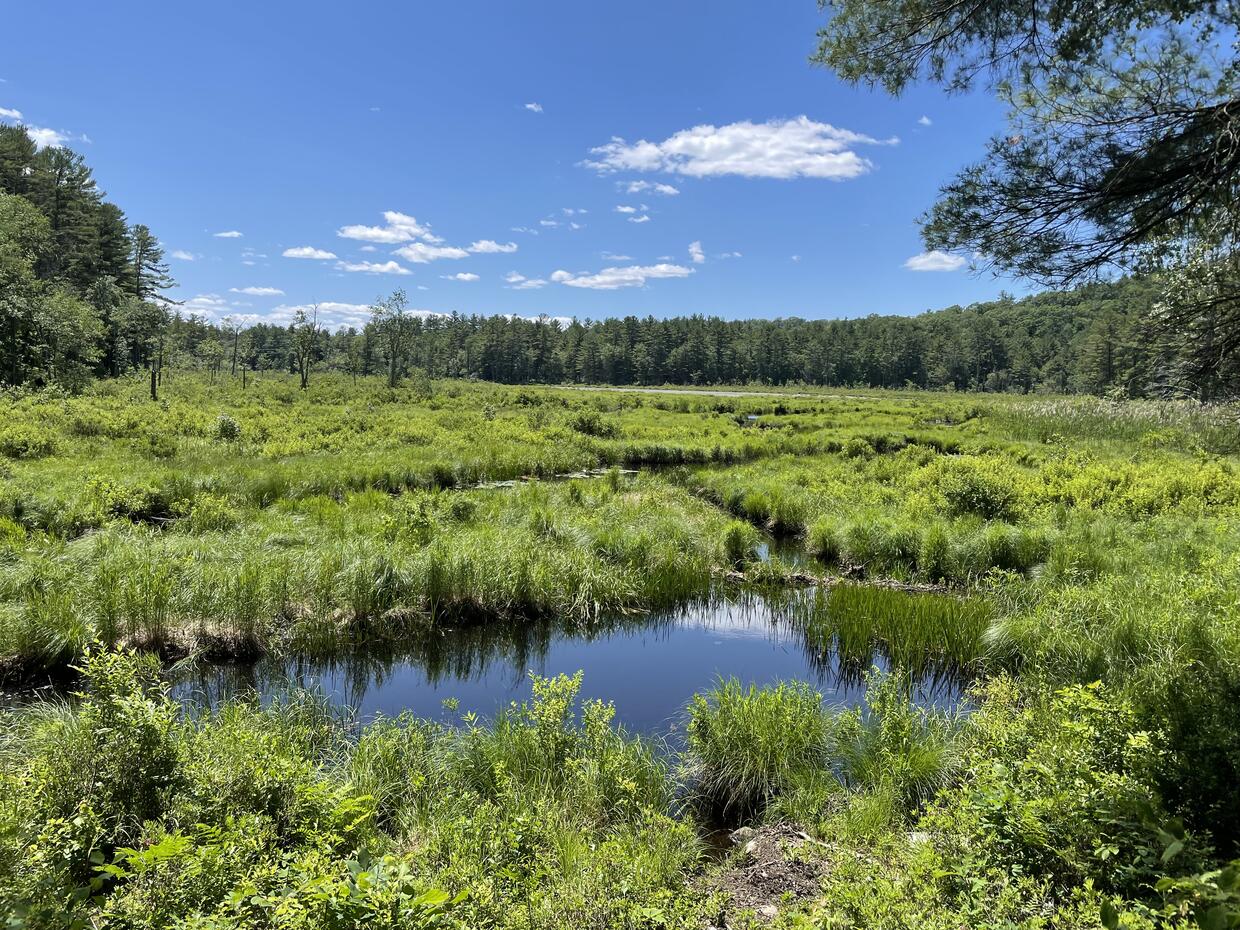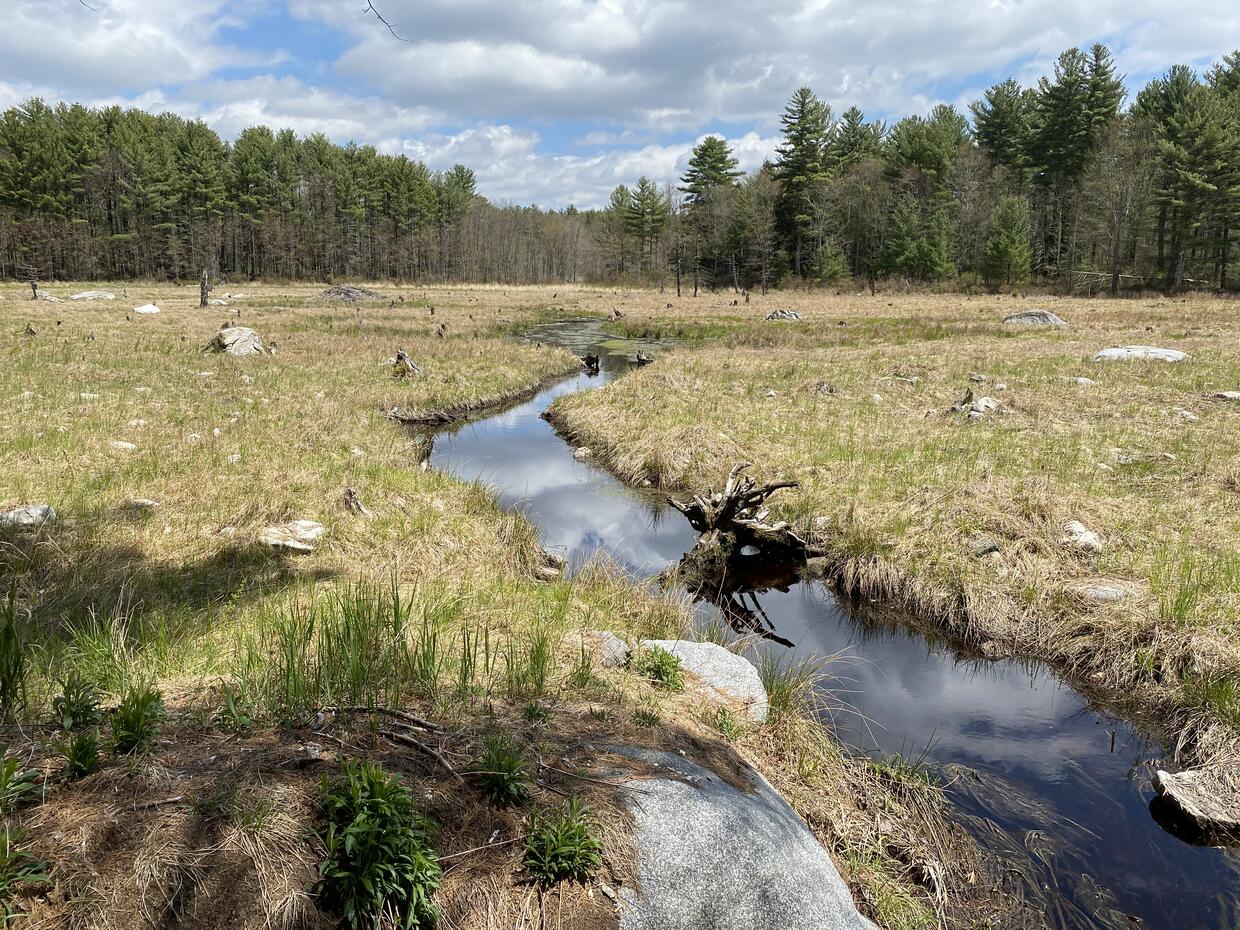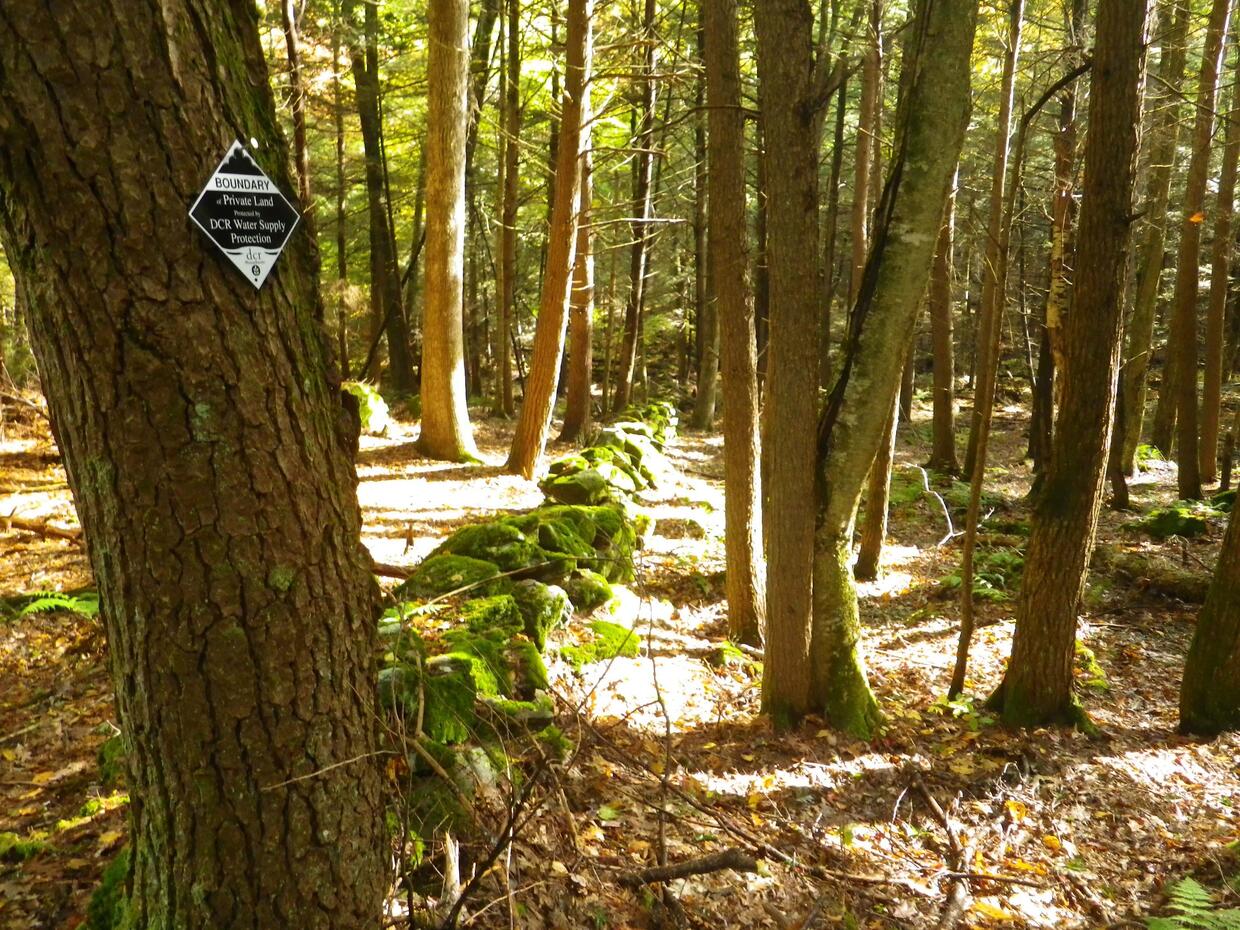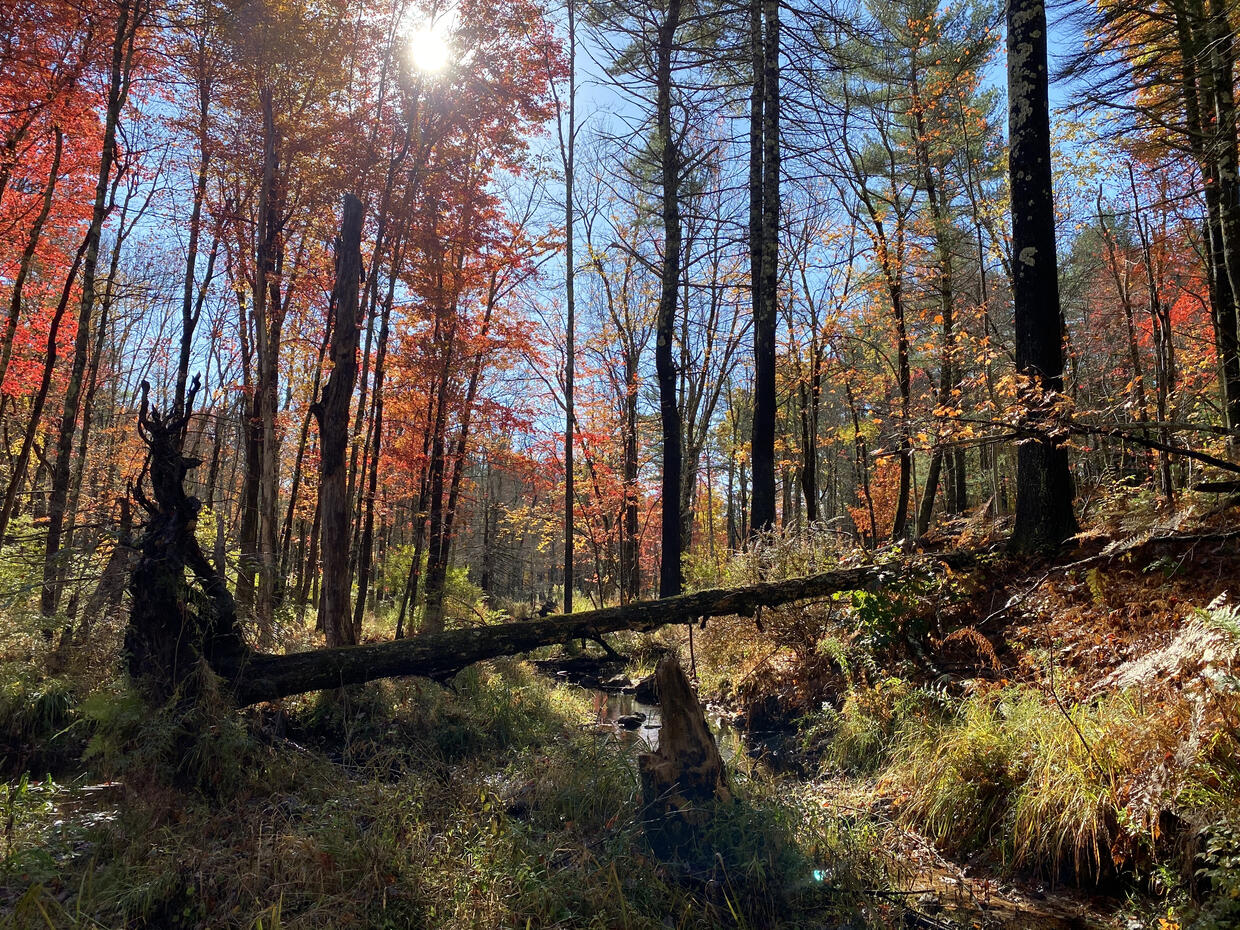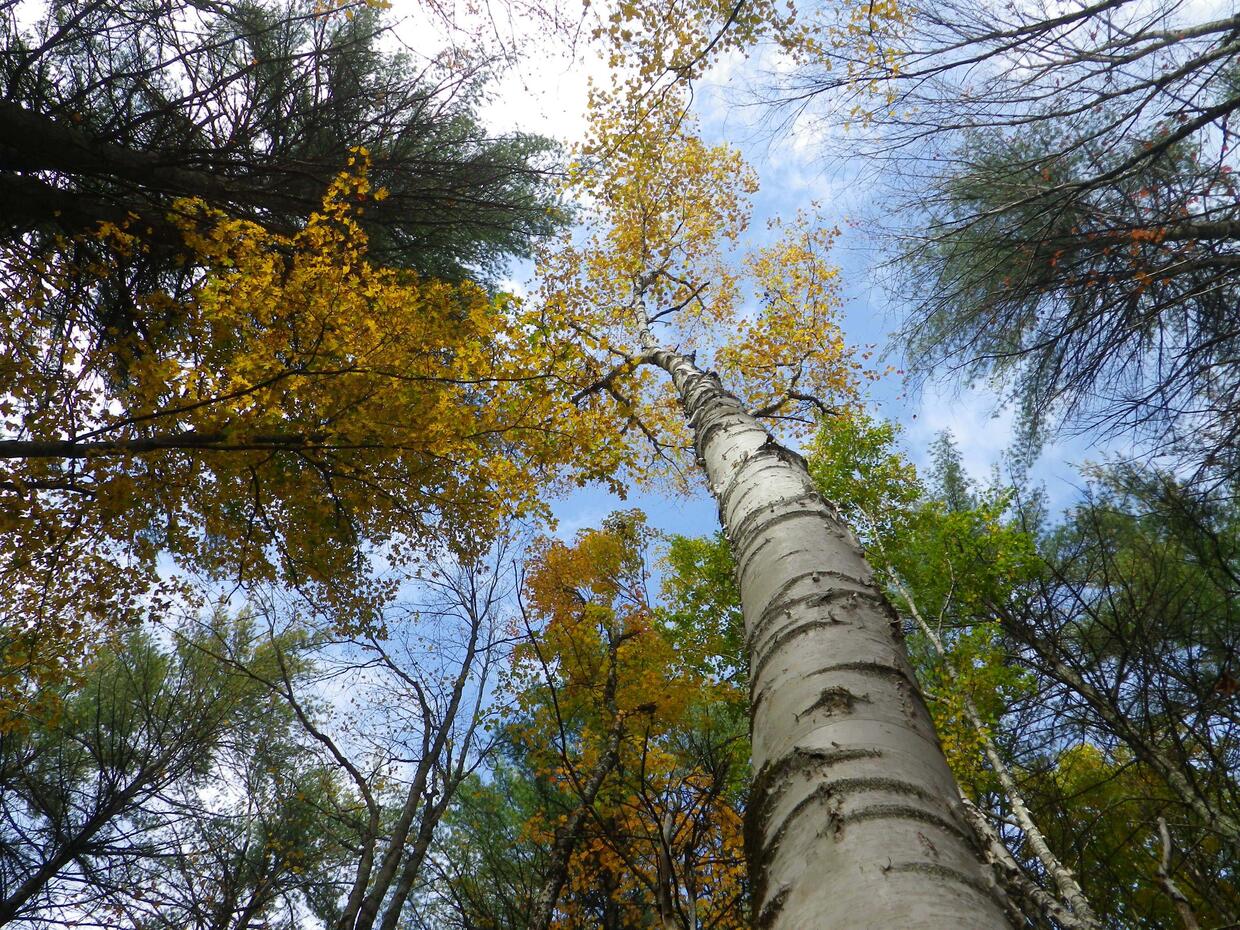What is a WPR?
Definition
A Watershed Preservation Restriction (WPR) is a voluntary legal agreement between the Division of Water Supply Protection (DWSP) and a private landowner that permanently protects open space by restricting development and limiting certain uses to help protect water quality.
Ownership: Fee vs WPR
DWSP conserves land by owning it outright ("in fee") and by placing WPRs on privately-owned property. A WPR allows the landowner to retain ownership rights to their land while agreeing to manage their land in a manner that protects water quality. Each WPR is unique and is developed through collaboration between the landowner and DWSP.
Protected in Perpetuity
A WPR is a permanent interest in property, recorded at the Registry of Deeds, and represents a legally binding agreement that ensures the land is protected through all subsequent changes in property ownership. All Restrictions held by Massachusetts Executive Office of Energy and Environmental Affairs (EEA) state agencies are protected by Article 97 of the Amendments to the Constitution of the Commonwealth of Massachusetts.The intent of Article 97 is for land to be protected forever.
Public Access
WPRs vary when it comes to public access. If a property is protected with a WPR it does not necessarily mean it is open to the public. In most cases, it is the landowner’s decision whether and to what extent to allow the public on their property.
WPRs and Water Supply Protection
DWSP uses WPRs to protect the Commonwealth’s drinking water. WPRs vary in size from half-acre to 600+ acre forests. Most WPRs prohibit construction, excavation, use of hazardous materials, and other activities that would harm the watersheds which provide the drinking water supply for approximately 2.7 million Massachusetts residents.
WPR Stewardship
After a WPR has been negotiated and purchased from a private land owner, DWSP conducts regular site visits to the property in order to determine whether the property is in compliance with the terms of the WPR. DWSP staff walk the land and look for any natural or human-made changes. In addition to ensuring compliance with the terms of the WPR, monitoring helps staff build and maintain positive working relationships with landowners.
Caring for a WPR is a cooperative effort between the landowner and DWSP. DWSP is committed to its stewardship responsibilities that come with conserving these lands and working with landowners, to help them thoughtfully manage their property to protect the diverse resources for the benefit of current and future generations.
Numbers and Locations of WPRs
Number of WPRs: 150
Area of WPRs: 8,823 acres, across the Quabbin Reservoir, Ware River, and Wachusett Reservoir watersheds.
Cost of WPRs: Over $32 million has been spent by DCR on WPRs. WPRs are conserved using a variety of funding sources. Most are purchased utilizing money provided by MWRA ($28 million). Many landowners take advantage of tax benefits by donating some or all of the value of the WPR. DCR also works with federal agencies, in particular the US Forest Service's Forest Legacy program ($3.5 million) and other state initiatives, such as EOEEA Landscape Partnership ($708,000). DCR partners with non-profit organizations - there are several community land trusts in the watershed system - to share the cost and long-term management of parcels that are important for both local conservation and water supply protection.
DCR DWSP Watershed Preservation Restrictions (WPRs) shown in orange.
WPR Landowner Resources
Thank you to all the landowners, who are stewards of land where DWSP holds a Watershed Preservation Restriction (WPR). DCR greatly appreciates partnering with you to permanently conserve your property in Massachusetts. Below are resources compiled to help you steward your land.
Landowner Handbook
DCR has developed a Watershed Preservation Restriction Landowner Handbook. The manual has several purposes:
- Help answer questions you may have about your Restriction.
- Help you understand your rights and responsibilities as the owner of a conserved property.
- Outline what to expect from DCR stewardship staff and our responsibilities as the Restriction holder of your conserved property.
- Outline the assistance available from DCR to help you steward your property’s unique features in compliance with the terms of your Restriction.
Land Management Resources
Before engaging in any management activity or land use change on your property please consult your WPR to ensure the activity is permitted and contact the WPR Coordinator with any questions.
Forestry
There are many good reasons to do forest management. Some people like to manage their forest to enhance wildlife habitat or to attract certain wildlife species, such as deer, moose, or birds. Other people want to create or improve recreational trails, or to manage their forests as a source of income. Often the goal is a combination of several different management objectives.
The DCR’s Service Forestry Program helps landowners make educated decisions about their woodlots and protects valuable forest resources through fair and consistent application of environmental regulations. The program provides technical expertise and services that help to uphold the conservation purposes of your Restricted land.
DCR’s Forest Stewardship Program supports a property owner’s desire to practice long-term guardianship of their woodlands. Working on a ten-year Forest Stewardship Plan (FSP) with a Massachusetts Licensed Forester offers an excellent opportunity to learn more about your woodland and can help guide your management decisions. DCR Service Forestry has a cost-share program to help out with the cost of completing FSPs. Properties with state-held CRs are eligible to apply to the cost-share program for New Forest Stewardship Plans, Forest Stewardship Plan Renewals, and Foresters for the Birds.
Best Management Practices
DCR has developed a series of Best Management Practices (BMPs) in response to frequently recurring issues identified through DCR’s Resource Management Planning process, technical assistance inquiries, and observations made in the field. These BMPs may be useful to landowners and include guidance for trail restoration and maintenance, invasive plant management, and complying with local and state regulations.
Funding Opportunities
Forest Stewardship Cost-Share Program - DCR Service Forestry has a cost-share program to help with the cost of completing Forest Stewardship Plans. Properties with state-held CRs and WPRs are eligible to apply to the cost-share program for: New Forest Stewardship Plans, Forest Stewardship Plan Renewals, and Foresters for the Birds.
MassWildlife Habitat Management Grant Program (MHMGP) - The MassWildlife Habitat Management Grant Program provides assistance to private and municipal owners of protected lands to enhance wildlife habitat, while promoting public access for outdoor recreation.
Partners for Fish and Wildlife - The U.S. Fish and Wildlife Service offers technical and financial assistance to landowners interested in restoring and enhancing wildlife habitat on their land. Eligible landowners include farmers, forest landowners, recreational landowners, corporations and local governments, and project duration is 10 years.
Environmental Quality Incentives Program (EQIP) - The Natural Resource Conservation Service (NRCS) provides technical and financial assistance to improve water and air quality, conserve ground and surface water, increase soil health, reduce erosion and sedimentation, improve or create wildlife habitat, and mitigate against drought and increasing weather volatility. Farmers and forest landowners who own or rent agricultural land are eligible. The NRCS will help the landowner or manager develop a conservation plan and can potentially provide funding to cover some of the conservation practices in the plan.
Division of Ecological Restoration (DER) Priority Projects - DER selects wetland, river and flow restoration projects through a state-wide, competitive process. DER chooses high-priority projects that bring significant ecological and community benefits.
WPR Newsletter
The original print WPR newsletter, Watershed Currents, has been renamed and upgraded to an electronic news format.
A Watershed Moment is the current biannual newsletter for owners of land protected by Watershed Preservation Restrictions. Each edition provides information on land management, wildlife, and stories about fellow landowners who have a WPR on their property.
Click here for current and past editions of WPR newsletters.
